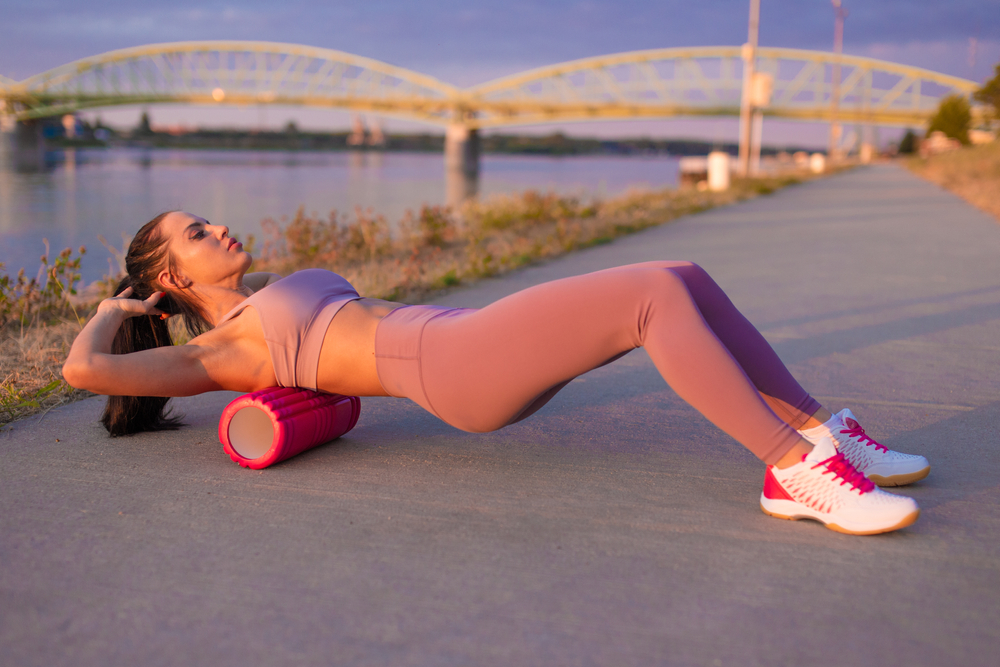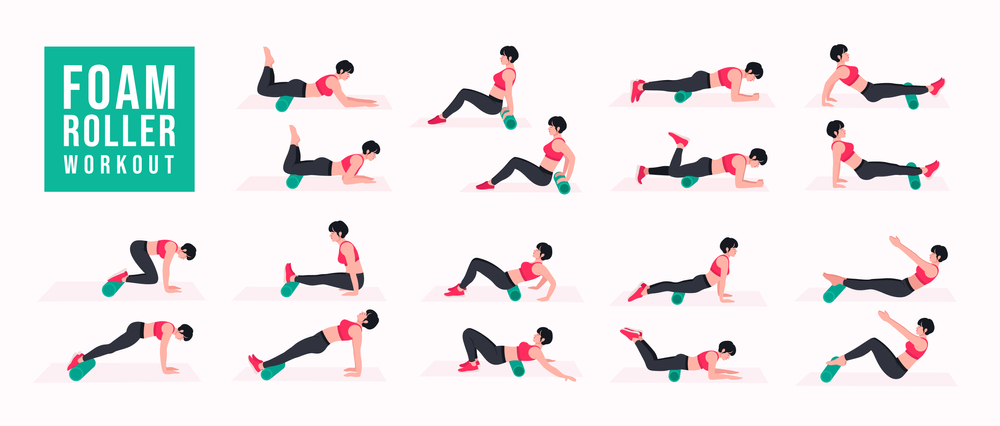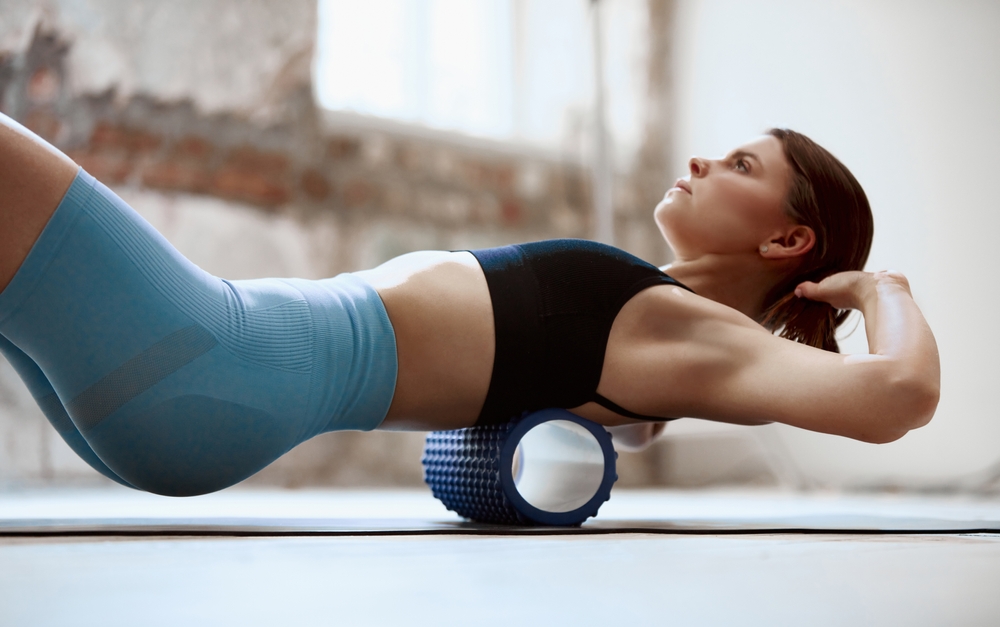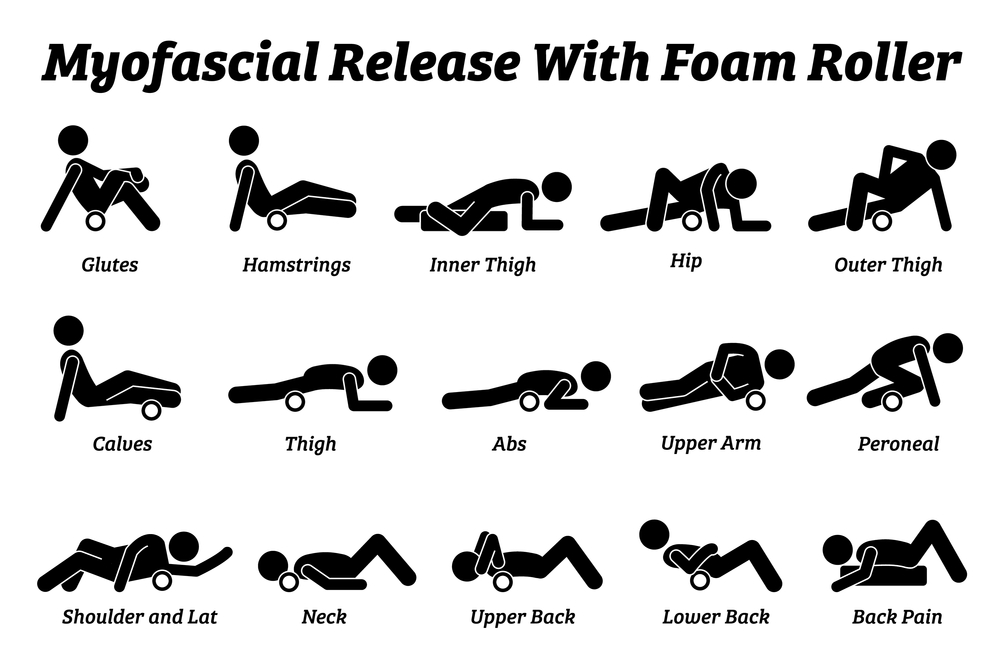Discover how to use a foam roller for effective muscle recovery. This guide provides step-by-step instructions for relieving soreness and improving flexibility.
Muscle recovery is a cornerstone of any successful fitness regimen. Whether you’re a professional athlete, a weekend warrior, or just beginning your fitness journey, ensuring your muscles recover properly is essential for long-term success. One of the most effective, accessible, and affordable tools for muscle recovery is the foam roller. This cylindrical piece of equipment can work wonders in alleviating muscle soreness, improving flexibility, and even preventing injuries.
In this guide, we’ll dive deep into the art of foam rolling, explaining how to use it correctly for muscle recovery. You’ll learn the benefits of foam rolling, how to select the right foam roller, and step-by-step instructions for targeting key muscle groups. By the end of this article, you’ll be equipped with all the knowledge you need to incorporate foam rolling into your daily routine effectively.
What is Foam Rolling?

Foam rolling, often referred to as self-myofascial release (SMR), is a technique where you use a foam roller to apply pressure to specific muscles in your body. The purpose of this is to relieve muscle tightness, soreness, and inflammation, and to increase your range of motion. When you use a foam roller, you essentially give yourself a deep tissue massage that can help break up adhesions and scar tissue, improve blood flow, and promote muscle recovery.
There are various types of foam rollers available on the market, ranging from soft to extra firm. Selecting the right one depends on your specific needs and comfort level. For instance, beginners might prefer a softer foam roller, while experienced athletes may opt for an extra-firm option like the Romix durable foam roller, which is designed to withstand intense pressure and provide deep tissue relief.
The Benefits of Foam Rolling

Incorporating foam rolling into your fitness routine offers a myriad of benefits that go beyond just muscle recovery. Here’s why you should consider making foam rolling a regular part of your exercise regimen:
1. Enhanced Blood Flow and Circulation
Foam rolling stimulates blood flow to the muscles, which helps in delivering essential nutrients and oxygen needed for recovery. Improved circulation also aids in flushing out toxins and metabolic waste from the muscles, reducing soreness and speeding up the healing process.
2. Reduced Muscle Soreness
One of the most immediate benefits of foam rolling is the reduction of muscle soreness, often referred to as delayed onset muscle soreness (DOMS). By breaking down knots and adhesions in the muscle fibers, foam rolling helps to alleviate the tightness and discomfort that can follow intense workouts.
3. Improved Flexibility and Range of Motion
Regular foam rolling helps to lengthen muscles and improve flexibility. This is particularly beneficial for athletes who need a wide range of motion for optimal performance. Enhanced flexibility also reduces the risk of injuries, as muscles are more pliable and can handle greater stress.
4. Injury Prevention
In addition to improving flexibility, foam rolling can help prevent injuries by addressing muscle imbalances and tightness before they lead to more serious issues. By regularly rolling out tense areas, you can maintain muscle balance and prevent strains or overuse injuries.
5. Stress Relief
Beyond the physical benefits, foam rolling can also provide mental relaxation. The act of rolling out your muscles can be a meditative process, helping to reduce stress and promote overall well-being.
If you’re looking for an extra-firm foam roller that provides deep tissue massage and long-lasting durability, consider this foam roller available on Amazon. It’s a great choice for those who want to take their recovery to the next level.
How to Choose the Right Foam Roller

Selecting the right foam roller is crucial for effective muscle recovery. Here’s what you should consider when choosing a foam roller:
1. Density
- Soft Foam Rollers: Ideal for beginners or those with very sensitive muscles. They offer a gentle massage and are less likely to cause discomfort.
- Medium-Density Foam Rollers: Suitable for those who have some experience with foam rolling. They provide a balance between comfort and effective muscle release.
- Firm Foam Rollers: Best for experienced users who need deep tissue massage. These rollers can be intense and are excellent for breaking up tight knots.
2. Size and Shape
- Standard Foam Rollers (24-36 inches): Great for larger muscle groups like the back, hamstrings, and quads. The length allows for more versatility in use.
- Compact Foam Rollers (12 inches or less): Perfect for targeting smaller areas, such as the calves or the upper back. These are also easier to carry to the gym or while traveling.
- Textured Foam Rollers: Rollers with ridges or bumps can provide an even deeper massage by targeting specific trigger points.
If you’re searching for a high-quality, extra-firm foam roller that’s perfect for deep muscle work, check out this foam roller on eBay. It’s a top-rated option for those serious about their muscle recovery.
Step-by-Step Guide: How to Use a Foam Roller for Muscle Recovery

Foam rolling is most effective when done correctly. Follow these steps to ensure you’re getting the most out of your foam rolling sessions:
1. Warm Up Your Muscles
Before you begin foam rolling, it’s important to warm up your muscles. Engage in light aerobic activity, such as jogging, cycling, or dynamic stretching, for about 5-10 minutes. This increases blood flow to your muscles, making them more pliable and receptive to foam rolling.
2. Begin with the Right Position
Position the foam roller under the muscle group you intend to target. Use your body weight to apply pressure, and start rolling slowly. Focus on rolling over the entire length of the muscle, moving at a pace of about 1 inch per second.
3. Target Specific Muscle Groups
Calves
Sit on the floor with your legs extended. Place the foam roller under your calves, just above your ankles. Lift your body with your hands, keeping your weight balanced between your arms and the roller. Slowly roll from your ankles to just below your knees, focusing on any tight areas. If you find a particularly tender spot, pause and hold the position for 20-30 seconds to let the muscle relax.
Hamstrings
Sit with the foam roller under your thighs, just above the knees. Support yourself with your hands behind you and lift your hips off the ground. Roll from your knees up to your glutes, ensuring you cover the entire hamstring area.
Quadriceps
Lie face down with the foam roller positioned under your thighs. Use your forearms to support your upper body. Roll from the top of your knees to your hips, applying pressure as needed. For deeper relief, try shifting your weight to one leg at a time.
Glutes and Piriformis
Sit on the foam roller with your knees bent and feet flat on the floor. Cross your right ankle over your left knee, creating a figure-four shape. Lean slightly to your right side and begin rolling back and forth over your glutes and piriformis. Repeat on the other side.
Upper Back (Thoracic Spine)
Place the foam roller under your upper back, just below the shoulder blades. Keep your feet flat on the floor and your hands behind your head. Lift your hips slightly off the ground and roll from your upper back to the middle of your back. Avoid rolling over the lower back directly, as it can strain the lumbar spine.
IT Band (Iliotibial Band)
Lie on your side with the foam roller positioned just below your hip. Use your forearm for support and place your opposite leg in front of you for balance. Roll from your hip down to just above your knee, focusing on any tight spots along the IT band.
4. Use Proper Technique
Ensure you maintain a slow and controlled movement throughout each exercise. Avoid rolling too quickly, as this can prevent the foam roller from effectively targeting muscle knots. Pay attention to your breathing; deep, steady breaths can help your muscles relax during the rolling process.
5. Hold on Trigger Points
As you roll, you might encounter particularly tender spots—these are trigger points or muscle knots. When you find one, pause and hold the pressure on that spot for 20-30 seconds. You may feel discomfort, but it should subside as the muscle releases.
6. Post-Roll Stretching
After foam rolling, it’s beneficial to follow up with static stretching. This helps to further lengthen the muscles and solidify the work you’ve done with the foam roller. Focus on stretching the areas you just rolled, holding each stretch for 30 seconds to 1 minute.
7. Frequency and Duration
Aim to incorporate foam rolling into your routine at least 3-4 times per week, particularly after intense workouts. Spend about 1-2 minutes on each muscle group, adjusting based on your personal needs and tolerance.
For those looking for a foam roller that offers the perfect balance of firmness and durability, the Romix durable foam roller is an excellent choice, designed to meet the demands of regular use.
Foam rolling is a powerful tool that can significantly enhance your muscle recovery and overall fitness. By incorporating it into your regular routine, you’ll experience reduced muscle soreness, improved flexibility, and a lower risk of injury. Remember to choose the right foam roller for your needs, use proper technique, and be consistent with your practice.
For those in search of a top-quality, durable foam roller, consider the extra-firm roller from Romix, which is ideal for both beginners and advanced users. Whether you’re looking to relieve tension after a tough workout or simply want to enhance your flexibility, a foam roller can make a world of difference.
Start rolling today, and give your muscles the care they deserve!
Frequently Asked Questions
Foam rolling can be done daily, especially if you’re actively training. It’s particularly beneficial after workouts to aid in muscle recovery. Start with 10-15 minutes of foam rolling per session, focusing on areas that are prone to tightness or soreness.
Foam rolling can be uncomfortable, especially if your muscles are tight or you’re working on trigger points. However, it shouldn’t be unbearably painful. Start with a softer roller if you’re new to foam rolling, and gradually increase pressure as your muscles become accustomed to the sensation.
Foam rolling and stretching serve different purposes. Foam rolling helps to release muscle tightness and improve circulation, while stretching lengthens the muscles and improves flexibility. Both should be included in your routine for optimal muscle recovery and performance.
Generally, foam rolling is safe for most people. However, if you have any existing injuries, severe muscle imbalances, or conditions such as osteoporosis, consult a healthcare professional before starting a foam rolling routine. Additionally, avoid rolling directly over joints, bones, or areas of acute injury.
Foam rolling can be beneficial both before and after workouts. Pre-workout rolling helps to warm up the muscles and increase range of motion, while post-workout rolling aids in muscle recovery by reducing soreness and promoting relaxation.

